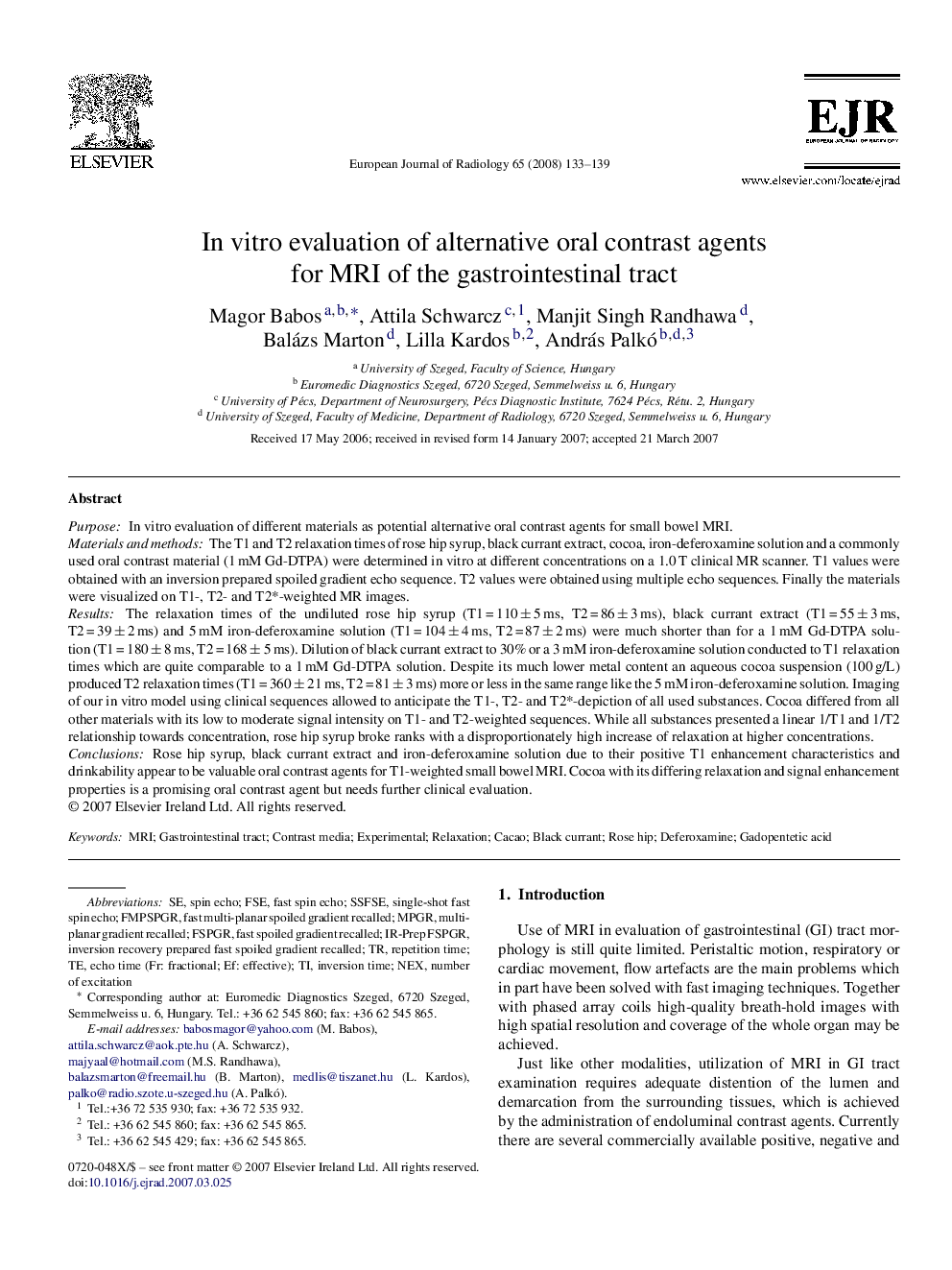| Article ID | Journal | Published Year | Pages | File Type |
|---|---|---|---|---|
| 4228320 | European Journal of Radiology | 2008 | 7 Pages |
PurposeIn vitro evaluation of different materials as potential alternative oral contrast agents for small bowel MRI.Materials and methodsThe T1 and T2 relaxation times of rose hip syrup, black currant extract, cocoa, iron-deferoxamine solution and a commonly used oral contrast material (1 mM Gd-DTPA) were determined in vitro at different concentrations on a 1.0 T clinical MR scanner. T1 values were obtained with an inversion prepared spoiled gradient echo sequence. T2 values were obtained using multiple echo sequences. Finally the materials were visualized on T1-, T2- and T2*-weighted MR images.ResultsThe relaxation times of the undiluted rose hip syrup (T1 = 110 ± 5 ms, T2 = 86 ± 3 ms), black currant extract (T1 = 55 ± 3 ms, T2 = 39 ± 2 ms) and 5 mM iron-deferoxamine solution (T1 = 104 ± 4 ms, T2 = 87 ± 2 ms) were much shorter than for a 1 mM Gd-DTPA solution (T1 = 180 ± 8 ms, T2 = 168 ± 5 ms). Dilution of black currant extract to 30% or a 3 mM iron-deferoxamine solution conducted to T1 relaxation times which are quite comparable to a 1 mM Gd-DTPA solution. Despite its much lower metal content an aqueous cocoa suspension (100 g/L) produced T2 relaxation times (T1 = 360 ± 21 ms, T2 = 81 ± 3 ms) more or less in the same range like the 5 mM iron-deferoxamine solution. Imaging of our in vitro model using clinical sequences allowed to anticipate the T1-, T2- and T2*-depiction of all used substances. Cocoa differed from all other materials with its low to moderate signal intensity on T1- and T2-weighted sequences. While all substances presented a linear 1/T1 and 1/T2 relationship towards concentration, rose hip syrup broke ranks with a disproportionately high increase of relaxation at higher concentrations.ConclusionsRose hip syrup, black currant extract and iron-deferoxamine solution due to their positive T1 enhancement characteristics and drinkability appear to be valuable oral contrast agents for T1-weighted small bowel MRI. Cocoa with its differing relaxation and signal enhancement properties is a promising oral contrast agent but needs further clinical evaluation.
